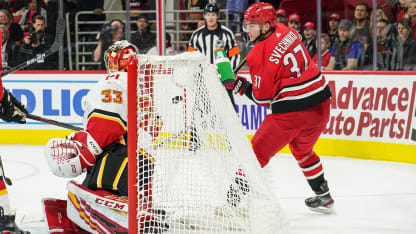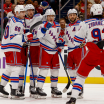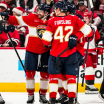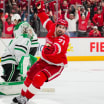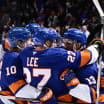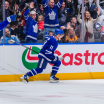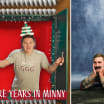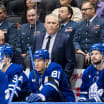It is a time for goalies to be aware of the new possibility, not to worry excessively about it.
"I think tracking is the most important habit that allows a goalie to adjust," Washington Capitals goaltending coach Scott Murray said. "It is more about having good habits that allow you to defend multiple attacks versus defending a play that happens very little."
Most coaches praised Hellebuyck for his positioning on the goal Tuesday, saying it was a tougher chance than the goal against Calgary because Svechnikov never broke stride while pulling the puck from one side of the net to the other.
Specifically, the good tracking and visual habits Hellebuyck used, looking over his short, or same-side, shoulder as the attack started on his left, were applauded. It was a technique that seemed to allow him to recognize what was coming before he swung across to his right to try to seal the post.
Hellebuyck has yet to talk about the goal, but the way he came across the ice, with his blocker and stick positioned higher than they would be for an expected wraparound attempt, suggests he had an inkling of what was to come.
Yet Svechnikov scored. Sometimes, as a goalie, you have to give credit to the shooter.
Some wonder if a reliance on reverse-VH by goalies is to blame on these goals. Rittich and Hellebuyck each used the reverse-VH technique in trying to counter the attack.
Reverse VH, commonly used for sharp-angle attacks and plays behind the net, has the goalie go to one knee with the short-side pad up against the post and the inside pad slightly off the ice so the back-side skate edge can help drive the goalie into the post while acting as a rudder to steer around it, as well as move efficiently off the post.
For a shorter goalie, there is a concern that an inability to drive his shoulder all the way up to the crossbar from his knees and close that top-corner hole while using reverse-VH could be problematic. But, as Talbot suggested, the solution there is to tuck his mask against the post rather than dismiss the reverse-VH system altogether.
"You would be abandoning the one position that has revolutionized goaltending as much, if not more, than the butterfly," Vancouver Canucks goaltending coach Ian Clark said. "The reality is there is no other body position in the history of the game that allows us to dynamically connect everything we do away from our post to everything we do on our post."
